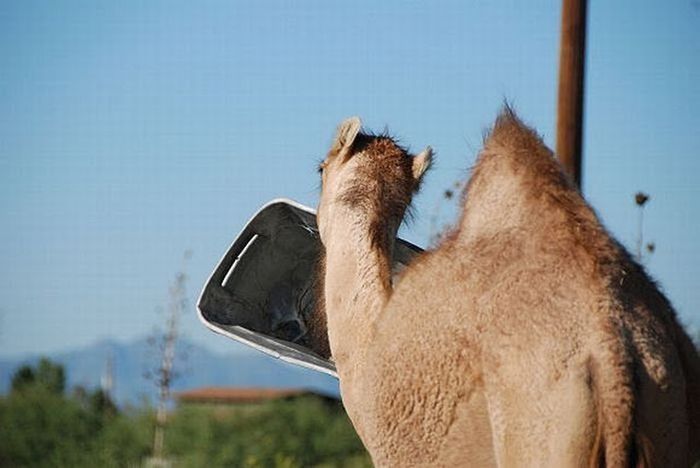|
|
Camel Playing With A Trash Bin
|
Their ability to withstand long periods without water is due to a series of physiological adaptations. Their red blood cells have an oval shape, unlike those of other mammals, which are circular. This is to facilitate their flow in a dehydrated state. These cells are also more stable in order to withstand high osmotic variation without rupturing when drinking large amounts of water (100 litres (22 imp gal; 26 US gal) to 150 litres (33 imp gal; 40 US gal) in one drink). Oval red corpuscles are not found in any other mammal, but are present in reptiles, birds, and fish.
Camels are able to withstand changes in body temperature and water content that would kill most other animals. Their temperature ranges from 34 °C (93 °F) at night and up to 41 °C (106 °F) during the day, and only above this threshold will they begin to sweat. The upper body temperature range is often not reached during the day in milder climatic conditions, and therefore, the camel may not sweat at all during the day. Evaporation of their sweat takes place at the skin level, not at the surface of their coat, thereby being very efficient at cooling the body compared to the amount of water lost through perspiration.
|
|









